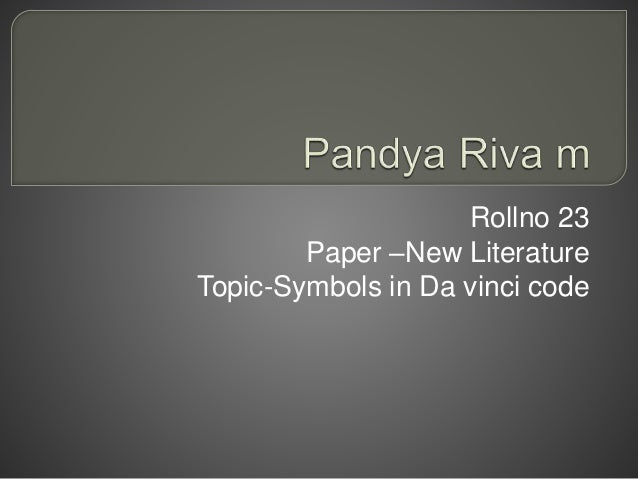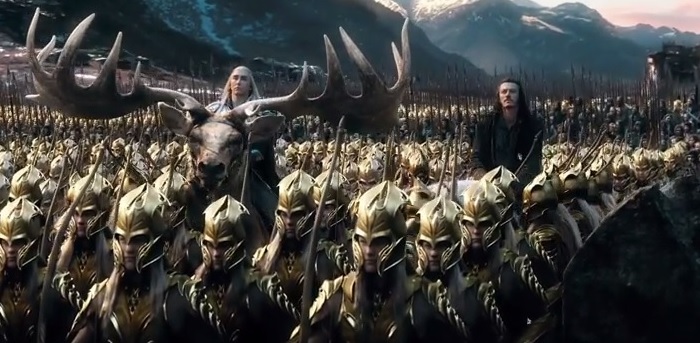Deciphering The Symbols And Codes In The Da Vinci Code

Table of Contents
The Priory of Sion and its Symbolic Representation
The Priory of Sion, a fictional organization central to The Da Vinci Code, plays a crucial role in the novel's symbolic landscape. While the Priory's historical existence is debated, its portrayal in the novel elevates it to a clandestine society safeguarding ancient secrets. The symbolic importance of the Priory lies in its alleged guardianship of truths concealed from the masses, a concept that fuels the narrative's suspense.
- Cryptic Symbols and Secret Societies: The novel utilizes a network of cryptic symbols and secret societies to enhance the sense of mystery and intrigue surrounding the Priory's activities, mirroring real-world historical organizations shrouded in secrecy.
- Historical Connections: The Priory’s connection to historical figures like Leonardo da Vinci and Isaac Newton adds to its allure, blending fiction with hints of historical reality, and raising questions about the potential existence of such secret organizations.
- Protecting the "Truth": The Priory’s alleged role in protecting alternative interpretations of Jesus Christ's life and lineage contributes to the book's controversial themes and fuels the debate surrounding its historical accuracy and religious implications. The very act of concealing this "truth" becomes a powerful symbol itself.
Decoding the Fibonacci Sequence and the Golden Ratio
The Da Vinci Code incorporates mathematical concepts like the Fibonacci sequence and the Golden Ratio, not merely as decorative elements but as integral parts of the narrative's symbolic language. These mathematical patterns are found in art, architecture, and nature and represent harmony and divine proportion. Their presence in the novel adds layers of complexity, suggesting a hidden order underpinning the seemingly chaotic events.
- Examples in Art and Architecture: The novel uses examples of the Fibonacci sequence and Golden Ratio appearing in Leonardo da Vinci's artwork and architecture, emphasizing the artistic and aesthetic implications of these mathematical principles. This links the numerical patterns directly to the themes of the novel.
- Artistic and Aesthetic Implications: The incorporation of these concepts underscores the novel's interest in the intersection of mathematics, art, and spirituality, hinting at a hidden order governing the universe.
- Contributing to Mystery: The presence of these mathematical patterns adds another layer of complexity to the mystery. Their subtle inclusion challenges the reader to look for deeper meaning beyond the surface plot.
The Significance of Religious Symbolism and Iconography
The Da Vinci Code masterfully employs religious symbolism and iconography, often reinterpreting traditional Christian symbols within a controversial narrative. This manipulation of religious imagery adds a layer of provocative debate to the novel, stimulating discussion amongst religious scholars and general readers alike.
- Reinterpreted Symbols: The novel takes familiar Christian symbols—such as the Holy Grail and the female principle in Christianity—and presents them in unconventional ways, sparking dialogue and controversy. Understanding these reinterpretations is vital to understanding the book's message.
- Impact on Religious Perspectives: The novel's alternative interpretation of religious history has had a significant impact on religious perspectives, sparking debate and challenging traditional viewpoints. The book's popularity has contributed to increased scrutiny of religious narratives and their interpretations.
- Suspense and Controversy: The deliberate use of these symbols and their reinterpretations is not only a core element of the plot but also contributes significantly to the suspense and controversy surrounding the book. The ambiguity surrounding the truth only intensifies the thrill of the narrative.
The Role of Cryptic Clues and Ciphers in the Narrative
The narrative drive of The Da Vinci Code relies heavily on a series of cryptic clues and ciphers. These puzzles and riddles act as a central mechanism that pushes the plot forward, challenging both the characters and the reader to actively participate in the process of uncovering the truth. Understanding these codes is key to understanding the novel.
- Cipher Types: The novel incorporates various cipher types, from simple word puzzles to more complex visual codes, requiring a combination of knowledge, intuition, and problem-solving skills to decipher.
- Deciphering the Codes: The process of deciphering these codes—from the Rosy Cross cipher to the cryptic clues hidden within Leonardo da Vinci's artwork—is an integral part of the narrative's tension, mirroring the challenges faced by the protagonist.
- Narrative Tension: The puzzles contribute to the overall narrative tension. Each solved code brings the characters (and the reader) closer to the truth, but also opens up new avenues of mystery and intrigue.
Conclusion: Mastering the Art of Deciphering The Da Vinci Code
The Da Vinci Code is a masterful blend of fiction, history, and symbolism. Understanding the intricate network of symbols and codes embedded within its narrative is crucial to appreciating its full impact. From the cryptic symbolism of the Priory of Sion to the mathematical precision of the Fibonacci sequence and the controversial reinterpretations of religious iconography, each element contributes to a rich tapestry of meaning. The inclusion of clever ciphers further enhances the reader's engagement, transforming the act of reading into a form of code-breaking. Dan Brown's work has undeniably sparked renewed interest in symbology and cryptography, inspiring readers to explore the hidden meanings found in art, history, and even everyday life. Continue your journey into the captivating world of symbols and codes by exploring [link to relevant resource] and further deciphering the symbols and codes in The Da Vinci Code yourself!

Featured Posts
-
 Services Held For 15 Year Old Boy Killed In School Attack
May 13, 2025
Services Held For 15 Year Old Boy Killed In School Attack
May 13, 2025 -
 Semeyniy Skandal Pochemu Syn Tatyany Kadyshevoy Lishen Roditelskikh Prav
May 13, 2025
Semeyniy Skandal Pochemu Syn Tatyany Kadyshevoy Lishen Roditelskikh Prav
May 13, 2025 -
 Analyzing The Hobbit The Battle Of The Five Armies A Critical Review
May 13, 2025
Analyzing The Hobbit The Battle Of The Five Armies A Critical Review
May 13, 2025 -
 Derbito Go Reshi Se Barnli I Lids Povtorno Vo Premier Ligata
May 13, 2025
Derbito Go Reshi Se Barnli I Lids Povtorno Vo Premier Ligata
May 13, 2025 -
 Life Cycle Education The Role Of Campus Farm Animals In Student Learning
May 13, 2025
Life Cycle Education The Role Of Campus Farm Animals In Student Learning
May 13, 2025
Latest Posts
-
 11
May 13, 2025
11
May 13, 2025 -
 Navigating Tariff Turbulence Abi Researchs Insights Into The Tech Sectors Trade War Experience
May 13, 2025
Navigating Tariff Turbulence Abi Researchs Insights Into The Tech Sectors Trade War Experience
May 13, 2025 -
 The Tech Industry And Tariffs Abi Researchs Analysis Of The Trump Administrations Trade Policies
May 13, 2025
The Tech Industry And Tariffs Abi Researchs Analysis Of The Trump Administrations Trade Policies
May 13, 2025 -
 The Future Of Xr Ai First Devices And The Platform Wars
May 13, 2025
The Future Of Xr Ai First Devices And The Platform Wars
May 13, 2025 -
 Trumps Trade War Abi Research Analyzes The Lasting Impact On Tech Tariffs
May 13, 2025
Trumps Trade War Abi Research Analyzes The Lasting Impact On Tech Tariffs
May 13, 2025
